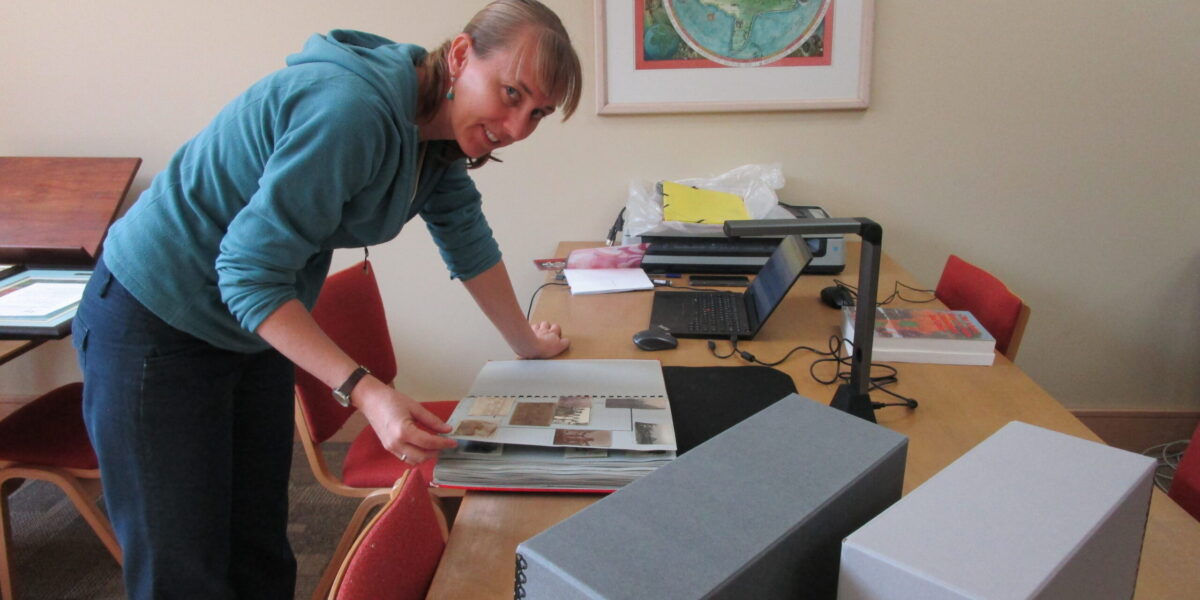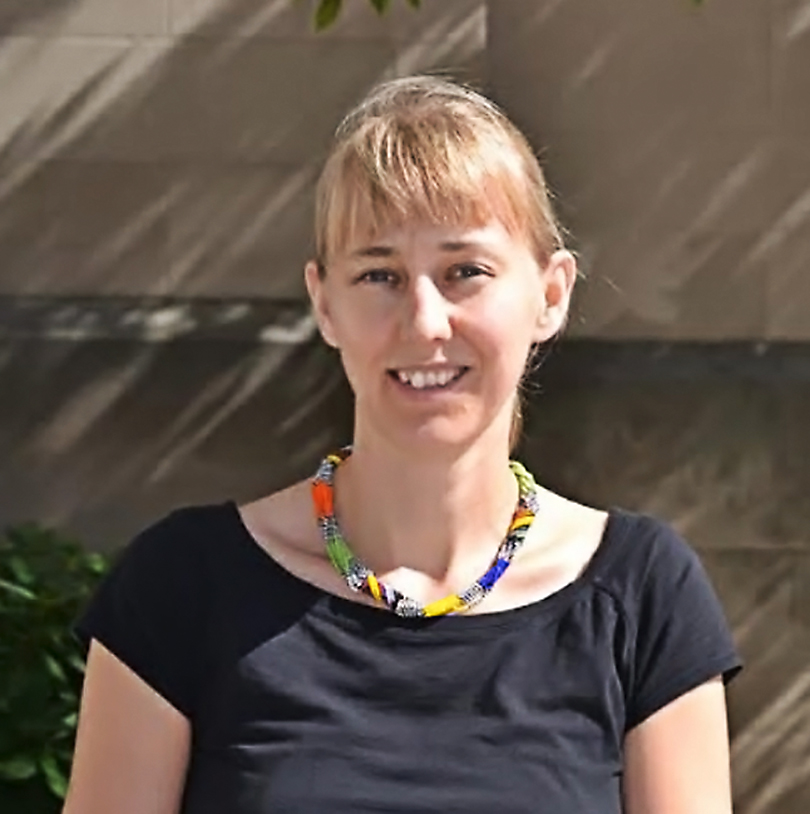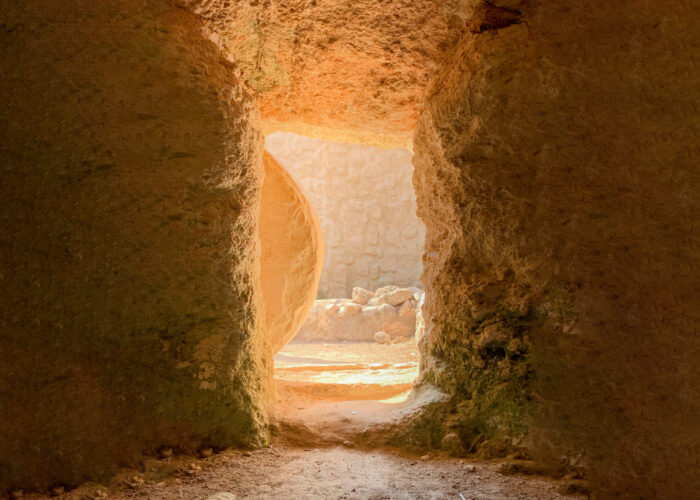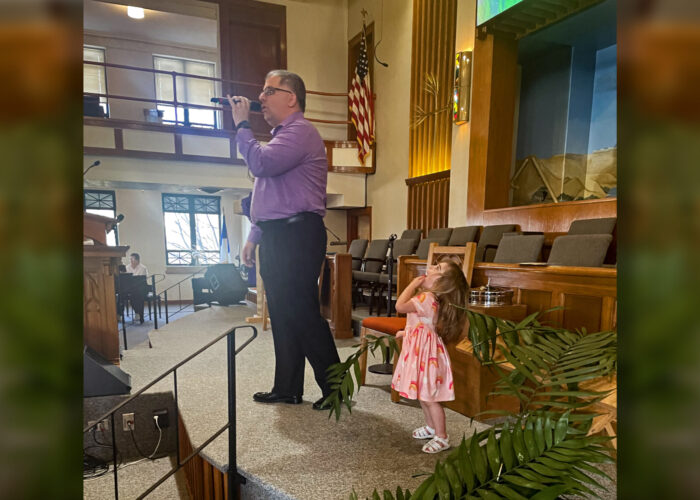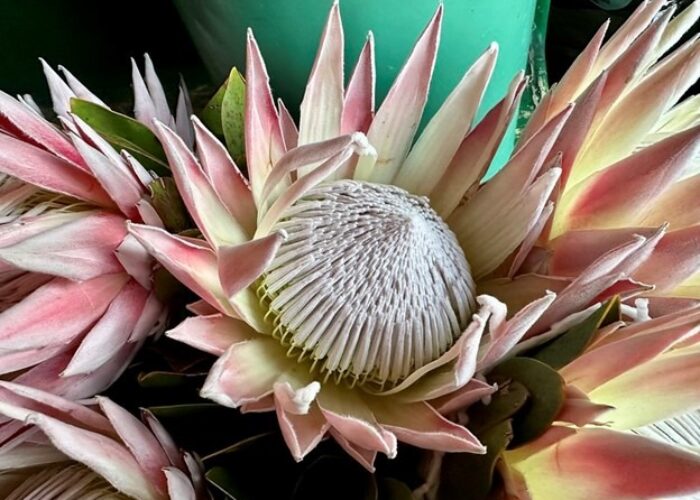Far from being a place of musty history, Anicka Fast, who ministers through Mennonite Central Committee, Mennonite Mission Network, and Mennonite World Conference, finds joy, sheds tears and dreams of intercontinental, interchurch research in the Mennonite Church USA Archives. To learn more about Fast’s work, listen to MissionWary? podcast episode 6 and a bonus mini-episode about Edna Kensinger and Kazadi Matthieu.
During a busy two-week trip to the United States, I managed to reserve a day and a half to spend some time in the Mennonite Church-USA Archives in Elkhart, Indiana. I planned to consult the records of Africa Inter-Mennonite Mission’s (AIMM) work in the Democratic Republic of Congo (DRC). I became familiar with this collection while doing my doctoral dissertation. The collection contains 139 linear feet of materials that were created between 1905 and the early 2000s. Between 2016 and 2020, I had spent days on four separate occasions frantically scanning these documents for my dissertation research. I had scanned more than what was relevant to my own research, hoping that the scans would one day be useful for Congolese Mennonite historians, and indeed I have had opportunities to share those scans with researchers in DRC.
This visit, however, was different. This time, I was coming to look for photos of seven Congolese Mennonite men and women whose biographies will be featured, along with nine others’, in an upcoming book to be published in Langham’s Global Perspectives Series. These seven people had been members of the Communauté mennonite au Congo (Mennonite Church of Congo, CMCo) or the Communauté évangélique mennonite (Evangelical Mennonite Church, CEM), two church communities that were closely associated with the work of the Congo Inland Mission, founded in 1911 and later renamed Africa Inter-Mennonite Mission. Participants from a history-writing workshop we hosted in DRC in March were now busy researching and writing these biographies, and as one of the course instructors, I had promised to look for photos, and perhaps other archival materials, to assist in their research.
I began with Djoko David,* a Pende man from Mukedi, born around 1895. I knew that he had been among the first Kipende-speaking believers at the Mukedi mission station, and he had welcomed and taught Kipende to a Luba evangelist, Nsongamadi, in 1920. I selected a box from about half a dozen contained in the audio-visual records series, found a scrapbook that had been donated to the Archives by a long-term AIMM missionary who had been among the first to work at Mukedi in the 1920s, and began to browse through the photos pasted onto heavy cardboard pages. Many were unlabeled. Others contained information about only a subset of the people on the photo — often, unfortunately, only the White people. Finding no labeled photo of Djoko David, I started scanning and saving a few photos of groups in which it seemed he might be included. But this became laborious, and I began to be anxious that I would get bogged down in 1920 Mukedi photos and never get to the other six people whose photos I had hoped to find. However, after a couple of hours, I finally found a photo with a label that included Djoko David’s name. There he was, third from the left in the back row of a large group!
 Then, after another half hour, I found a family photo of Djoko with his wife and children from the 1930s!
Then, after another half hour, I found a family photo of Djoko with his wife and children from the 1930s!

Djoko’s wife’s and children’s names were not labeled, although I knew from Mihala Donatien, the author of Djoko’s biography, that Djoko had married Kwangu Rebecca in 1929. I quickly shared the photo in the WhatsApp group, and Mihala responded with excitement and thanks.
And that was the end of my first half-day of searching.
On the second day, I returned with some trepidation, hoping that I would be able to find photos of the remaining subjects more efficiently. The day was a long slog through several more boxes, but I did get lucky. It’s hard to describe the feeling of turning over page after page of photos and then unexpectedly having a name catch my eye. Suddenly, a person who had only existed for me as a name came alive with a smile, a distinctive hairdo or a twinkle in her eye. I knew how much the photos would mean to the authors of the biographies and the families of the subjects. I usually had to wipe away a tear when I came across these treasures.
The labels on the photos overwhelmingly favored the AIMM missionaries; after this came prominent pastors and then, their wives. Photos were full of unnamed Congolese women, laymen and children. To find photos of these less prominent figures, I had to trace the relationships that they had developed with those considered more worthy of inclusion in the historical record. Although I found it disconcerting to have to navigate through this maze of patron-client-like relationships, the results were worth the effort.
Khelendende Léonie, for example, was the daughter of pastor Khelendende Pierre, a prominent pastor at Kandala station in the 1950s. Photos of the pastor were relatively plentiful in the Kandala station files. Here is one of him and his wife in the 1950s.
 Not long after this, I was jubilant to find a photo that showed the couple with their two children. Might one of these be Khelendende Léonie?
Not long after this, I was jubilant to find a photo that showed the couple with their two children. Might one of these be Khelendende Léonie?
 I sent the photo off to Khelendende Léonie’s biographer, Charly Malembe, and she quickly responded, "WOW!! Pastor Leonie Khelendende is the younger daughter." I was moved to consider that this little girl, photographed with such an intense gaze, would later make a significant contribution to the Mennonite church in Congo.
I sent the photo off to Khelendende Léonie’s biographer, Charly Malembe, and she quickly responded, "WOW!! Pastor Leonie Khelendende is the younger daughter." I was moved to consider that this little girl, photographed with such an intense gaze, would later make a significant contribution to the Mennonite church in Congo.
In another case, I almost missed a find. I was looking for Sengu Rebecca, who was born in the 1920s and lived at Nyanga station. In a folder of photos from a 1977 women’s seminar at Kalonda, my eye caught Sengu Rebecca’s name on the back, in blurred print and with an alternative spelling.

I quickly turned over the photo and saw her there, sixth from the left.
 Her face looked familiar, and I thought I had seen her in some other photos. Again, I was able to get in touch with the author of her biography, Mundedi Bercie, for corroboration. Then, I found her smiling in a group of Bible women at Nyanga.
Her face looked familiar, and I thought I had seen her in some other photos. Again, I was able to get in touch with the author of her biography, Mundedi Bercie, for corroboration. Then, I found her smiling in a group of Bible women at Nyanga.
 Sengu Rebecca is third from the left. The label on the back said she was also known as Kina Ndjindji. [Kina means “mother, who gave birth to Ndjindji” in the Kipende language. Women’s names change to “mother of the name of their first child” when they give birth.] The photo was titled "Bible women." Mundedi responded enthusiastically to this photo. She was able to clarify that Ndjindji was the name of her oldest daughter, which is why she was known as Kina Ndjindji. Mundedi also sent me a photo of Sengu Rebecca that she had found in Congo during her interviews. Rebecca is standing on the right:
Sengu Rebecca is third from the left. The label on the back said she was also known as Kina Ndjindji. [Kina means “mother, who gave birth to Ndjindji” in the Kipende language. Women’s names change to “mother of the name of their first child” when they give birth.] The photo was titled "Bible women." Mundedi responded enthusiastically to this photo. She was able to clarify that Ndjindji was the name of her oldest daughter, which is why she was known as Kina Ndjindji. Mundedi also sent me a photo of Sengu Rebecca that she had found in Congo during her interviews. Rebecca is standing on the right:

And, finally, I found a close-up of Sengu Rebecca from the 1970s, again labeled with both names.
 Sengu Rebecca or Kina Ndjindji was a Bible woman, president of CMCo women in the 1970s, mother of Ndjindji, a smiling member of a group of evangelizing women friends. I am filled with desire to know this woman and to hear her story through the research of Mundedi, another strong and confident CMCo woman, living and speaking 50 years later in a male-dominated world.
Sengu Rebecca or Kina Ndjindji was a Bible woman, president of CMCo women in the 1970s, mother of Ndjindji, a smiling member of a group of evangelizing women friends. I am filled with desire to know this woman and to hear her story through the research of Mundedi, another strong and confident CMCo woman, living and speaking 50 years later in a male-dominated world.
I was able to find photos of two more of the biographical subjects: Mbuyi Kapinga Rosalie and Kazadi Matthieu. It was easy to find photos of Kazadi, since he had traveled to the United States, served as church president for years and had been the founder of the CEM. Mbuyi Kapinga Rosalie’s photos were a luckier find. She turned up in a set of photos of a home economics class, that had been taken by a visiting photographer in 1964 and carefully classified and labeled.
 Mbuyi Rosalie and Kamba Jeannette, washing dishes — I’m hoping to find out soon from Kalubi Liévin, author of Mbuyi’s biography, which of these young women is Mbuyi.
Mbuyi Rosalie and Kamba Jeannette, washing dishes — I’m hoping to find out soon from Kalubi Liévin, author of Mbuyi’s biography, which of these young women is Mbuyi.
I found nothing on Kholoma Esther or Masheke David. For Masheke in particular, I was surprised to find nothing. From the draft biography Birakara Joly had written, I knew he was a key figure in the founding of the station of Banga, a powerful evangelist and a peacemaker, who had helped smooth relationships among the first multi-ethnic leaders of the Banga church district. But the many photos of the early years of Banga’s existence showed no trace of him, perhaps because he was not an ordained pastor and had not been one of these official district leaders. I was moved to know that today, Birakara considers Masheke’s contribution worth excavating. I sent several group photos to Birakara with the hope that he might recognize Masheke on one of them.
Toward the end of the afternoon, I spent some time with Roberta Yoder, the archival assistant, to identify theses written by African writers in the AIMM collection. AIMM gave permission for these theses to be transferred to the Mennonite Historical Library, so that the hard copies would be more accessible to researchers. If I can get permission from their authors next time I’m in Congo, these theses can also be digitized by staff at the Institute for the Study of Global Anabaptism and made freely available online on the Bibliothèque numérique anabaptiste (Anabaptist Digital Library).
Balancing on a chair, Yoder energetically pulled down heavy boxes of theses from top shelves, and I scanned them for African authors. Together, we identified 10 theses or dissertations, most of which were in French, that we hope can soon be available more widely.
By the end of the day, I was tired and had a headache. But I was also filled with delight and new ideas. This was the first time I had experienced Congolese Mennonites engaging with the contents of the AIMM archives. And it felt like a new way of doing research — in collaboration with Congolese colleagues, via WhatsApp, driven by their agenda and research priorities. The contents of the AIMM archives, as biased as they are, offer critically important, well-preserved primary sources for the documentation of the Mennonite church in Congo.
I started to imagine pairing history students in North America with Congolese historians. Could this kind of archival research project be reproduced? Those located in the Global North could use their location to facilitate access to researchers in the Global South, permitting broader historical perspectives. Archivists could find new energy and meaning from such intercontinental and interchurch collaborations.
*Editor’s note: Fast uses the Congolese convention of family name preceding given name.

